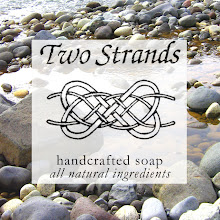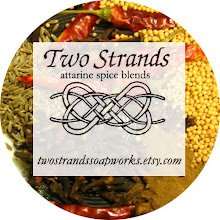
When it comes to cooking with spices, fresh is always best!
For years I've been drawn to the intense, fragrant flavors of East Indian and Middle Eastern cooking. And more often than not, these simple foods contain spice blends that are complex and almost ritual in their ingredients. Rare herbs, delicate gums, and unique seeds form sensuous flavors that ripple against one another, transforming simple dishes like rice and bread into masterpieces.
The art of blending spices is simple. Obtain your ingredients (preferably in whole, organic form), measure them out, toast them slowly over a low flame, and then grind them up into a fine powder. Once placed in a well sealed container, most fresh spice blends keep for weeks. Any longer than this and their flavor starts to wane. Also, if you refrigerate your blends, this will preserve them longer; however, it wil cause the fragrance to decrease as the oils become cold. Allow cold spices to reach room temperature before using in food preparation or you may use too much!
You have probably been subjected to the familiar commerical blah of spice blends. Most store bought spice blends are so old by the time they reach the shelves that their flavors lack the power they once held. Their oils have dried up and the delicate aromas are gone, leaving behind a lack of flavor. Ever seen grey basil or tasted an Herbes de Provence blend where the lavender was flavorless? Most people have witnessed this is one manner or another.
For example a fresh curry powder (kari pudi) is deep. It's nothing like the curry powders obtained in super markets. The color is different as well, as the kari pudi I make is one of hundreds of variances that this spice blend exhibits. Curry powders vary from home to home in East India. It is a personal blend based on the kari leaf and the unique preferences of each family. That is what makes it so special. My blend of Kari Pudi is my own and thus it's color, flavor and heat are special.
My Persian Advieh is the same way. Another common home spice, Advieh can be found in homes throughout Iran and Iraq. It varies wildly in region depending on which spices can be obtained most easily. What one woman blends for her family is nothing like that which another woman 10 miles away might make. Thus I have come up with my own based on a traditional Persian recipe. I love the complexity Advieh offers.
Rose buds and rose petals have a flavor that speaks of their nature as flowers. It is sweet, subtle, exotic and even spicy. Their flavor literally blooms in your mouth, creating a moment of magic when eaten. We are taught to look on roses, grow them, give them as gifts; but how often do we pause to add a bit of their carefully dried beauty to rice or tofu? Or infuse their buds in hot water for tea?
Spices are indulgent. They are the sensual matter that elevates food from mere nourishment to the gourmet. But this indulgence is something we all may know, when once such was unheard of. Spices, gums and resins have been traded across the world for thousands of years. At one time many of these natural ingredients were more precious than silk, gems, and in the case of frankincense, even gold.
Think about this the next time you add a little salt to your meal and consider that such has been used for millenia and was crucial to the preservation of food in many cultures.
You can view all of my freshly toasted spice blends in the Attarine Spice Section of my Etsy store. The link is in my favorites. Their friendly prices make it easy to sample the exotic!
1001 nights are nothing against the millions of years . . . .









No comments:
Post a Comment
Hi and welcome to my personal blog.
All views written herein are my personal beliefs, values, etc. If you do not agree with what I say, so be it; however, this is not a forum for argument, cruelty or slander. Only constructive or polite comments are welcome!
Life, Love, and Strength!